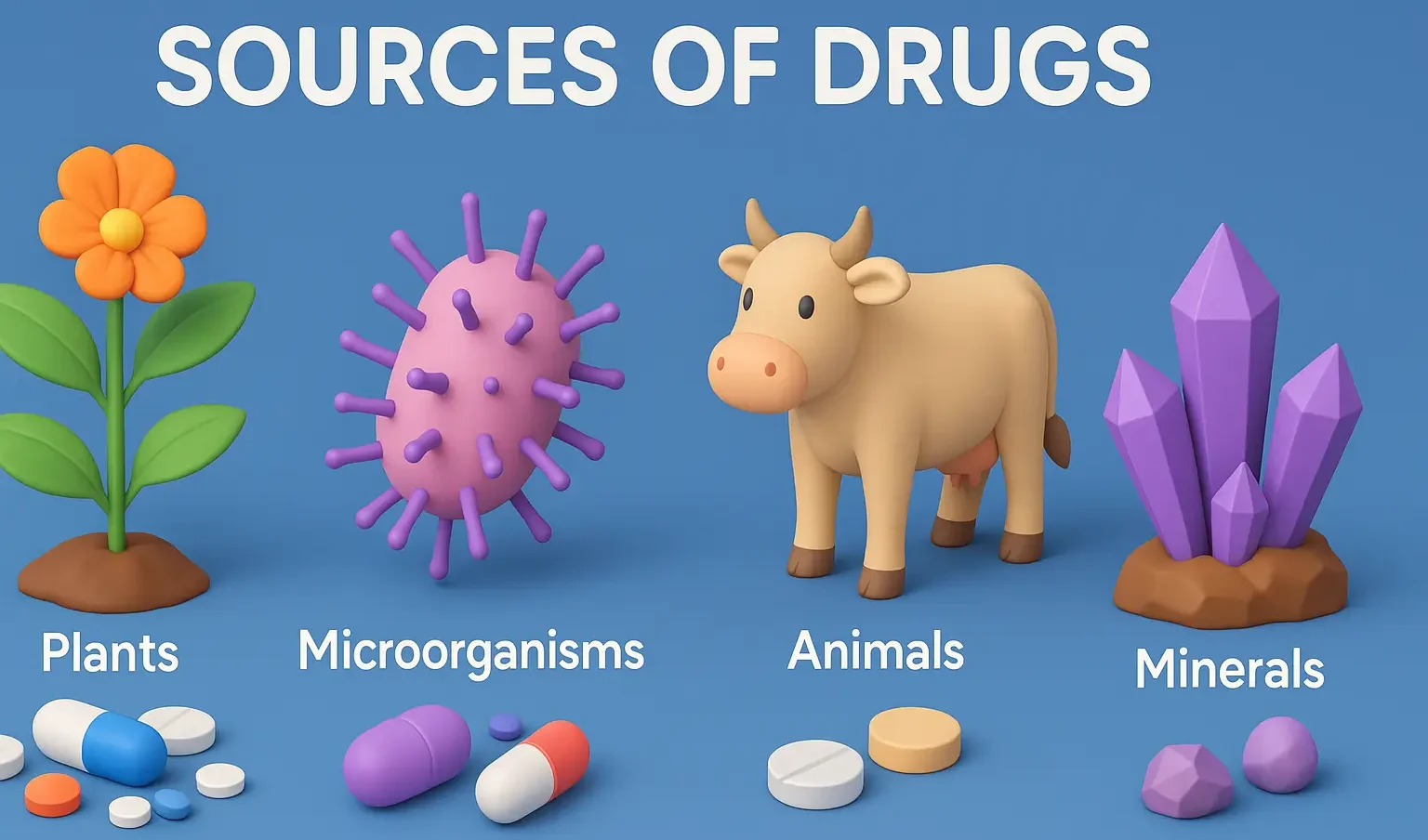- Sources of Drugs: Derived from plants, animals, minerals, microorganisms, and synthetic processes.
- Sources of Drugs: Provide active compounds for disease prevention and treatment.
- The development and production of medicinal compounds have historically relied on various natural sources.
- These sources include plants, animals, marine organisms, microorganisms, and tissue culture techniques.
- Each source offers unique advantages and specific compounds essential for modern medicine.
- Natural drugs come from a wide array of sources.
- The major categories are:
1. Plants
- Most Common Source: Historically and still today, plants remain the predominant source of natural drugs.
- Examples:
- Secondary Metabolites: Plants produce alkaloids, glycosides, tannins, volatile oils, resins, etc. that often display therapeutic properties.
2. Animals
- Animal Products: Various drugs are derived from animal tissues or secretions.
- Examples:
- Therapeutic Use: These substances are critical in treating certain diseases (e.g., insulin for diabetes).
3. Marine
- Marine Organisms: Rich source of novel bioactive compounds due to unique marine biodiversity.
- Examples:
- Sponges, corals, algae, marine bacteria, and fungi can produce antitumor, anti-inflammatory, and antimicrobial agents.
- Cytarabine (an anticancer drug) was inspired by marine sponges.
- Challenges: Difficulties in the collection and cultivation of marine organisms have historically slowed the discovery and mass production of marine-derived drugs, but advances in aquaculture and synthetic approaches are overcoming these obstacles.
Advertisements
4. Tissue Culture
- Plant Tissue Culture: In vitro techniques that involve growing plant cells, tissues, or organs in nutrient media under sterile conditions.
- Importance:
- Allows for the production of secondary metabolites (bioactive compounds) without needing to cultivate whole plants in the field.
- Enables micropropagation of rare or endangered medicinal plants.
- Potential for genetic transformation and metabolic engineering to enhance yield of therapeutic compounds.

